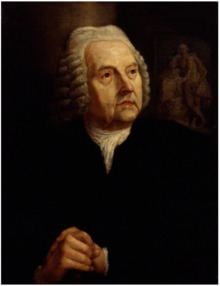Nationality Flemish | Name Peter Scheemakers | |
 | ||
Notable work Church monuments around England, notably William Shakespeare and John Dryden memorials, Poets' Corner Died September 12, 1781, Antwerp, Belgium | ||
Peter Scheemakers or Pieter Scheemaeckers II or the Younger (16 January 1691 – 12 September 1781) was a Flemish sculptor who worked for most of his life in London, Great Britain where his public and church sculptures in a classicist style had an important influence on the development of sculpture.
Contents
Scheemakers is perhaps best known for executing the William Kent-designed memorial to William Shakespeare which was erected in Poets' Corner in Westminster Abbey in 1740 as well as that to John Dryden in the same church.
Biography
He learned his art from his father, the Antwerp sculptor Pieter Scheemaeckers. He visited Denmark where he studied for four years with the court sculptor Johann Adam Sturmberg (1683–1741). He walked to Rome where he and Delvaux studied both classical and baroque styles of sculpture before settling in London in 1716. He and Delvaux worked there with another Flemish sculptor Pieter-Denis Plumier on a funeral monument to John Sheffield, Duke of Buckingham, which they delivered in 1722 after the death of Plumier.
Scheemakers and Delvaux entered into a formal partnership and set up a workshop in Millbank, Westminster, in 1723. Their workshop produced many sober classical monuments and garden statuary after the Antique. The partners sold their stock in the partnership and travelled to Rome in 1728. Scheemakers stayed here for two years to study both antique and recent masterpieces. Upon his return to England in 1730 Scheemakers restarted the Milbank workshop on his own. His 'ideal' classical sculptures became very popular with the landowning class and the city merchants. He moved his workshop a few times: first to Old Palace Yard in 1736 and then to Vine Street in 1740 where he was active until his retirement in 1771. He returned to Antwerp where he died at the old age of 90.
He worked for a time with Francis Bird, and was the teacher of Henry Cheere and Charles Cope Trubshaw, amongst others. Joseph Nollekens joined his studio in 1747 and served his apprenticeship here, before leaving for Rome in 1762.
Scheemakers' brother, Henry Scheemakers, and his son, Thomas Scheemakers, were both also sculptors.
Westminster Abbey
Fifteen of Scheemakers' works — monuments, figures and busts — are in Westminster Abbey; two were executed in collaboration with his master Delvaux: the “Hugh Chamberlen” (d. 1728, and therefore perhaps produced during his first visit to London) and “Catherine, duchess of Buckinghamshire.” He is best known by his monument to Shakespeare (1740), but as this work was designed by Kent the responsibility must not all be laid to Scheemakers' account. In addition to these, there are the monuments to Admiral Sir Charles Wager, Vice-Admiral Watson, Lieut.-General Percy Kirk, George Lord Viscount Howe, General Monck, and Sir Henry Belasye. His busts of John Dryden (1720) and Dr. Richard Mead (1754), also in the Abbey, are noted examples of his smaller works.
Other English works
Works outside of Westminster Abbey are memorials to the 1st and 2nd dukes of Ancaster at Edenham, Lincolnshire; Lord Chancellor Hardwicke at Wimpole, Cambridgeshire; the duke of Kent, his wives and daughters, at Fletton, Bedfordshire; the earl of Shelburne, at Wycombe, Bucks; and the figure on the sarcophagus to Montague Sherrard Drake, at Amersham. Another example of his work is the memorial to Topham Foote (or Foot) in the parish church of St John the Baptist, Windsor. This burial monument, which includes the young man's bust and the Foote family crest, greets visitors in the main High Street entrance, just 300 feet (90 m) from the Henry VIII gate to Windsor Castle. He also sculpted a memorial for the Petty family, marking the family burial place in All Saints Parish Church, High Wycombe, which depicts the family in Roman dress, and designed the gilded equestrian statue of King William III erected at Kingston upon Hull (1734).
Ireland
In 1743, Mary Coghill erected the parish church of Clonturk (now Drumcondra Church), in memory of her brother Marmaduke Coghill and placed in it a statue of her brother by Peter Scheemakers.
Legacy
Between 1970 and 1993, an image of Scheemakers's Shakespeare statue appeared on the reverse of Series D £20 notes issued by the Bank of England. Alongside the statue was an engraving of the balcony scene from Romeo and Juliet.
